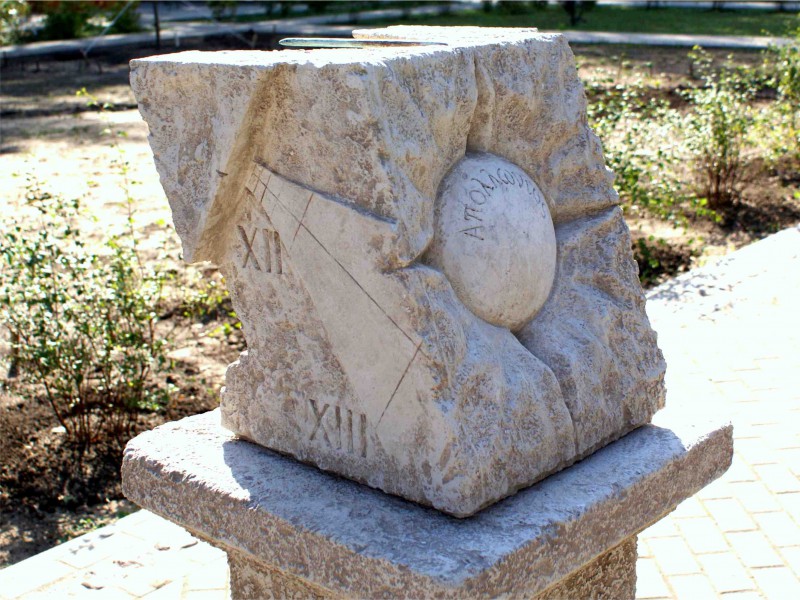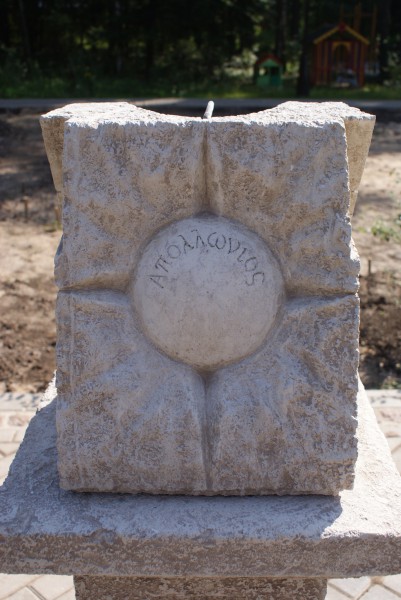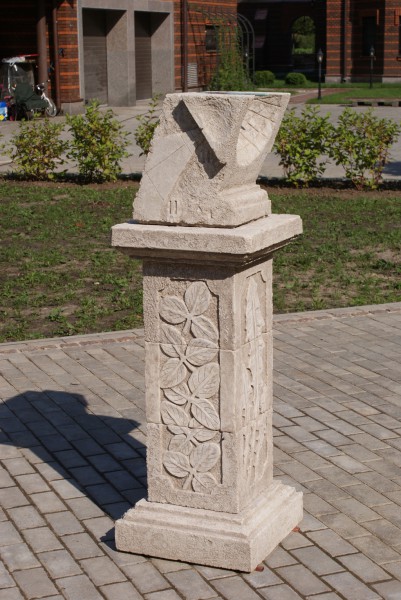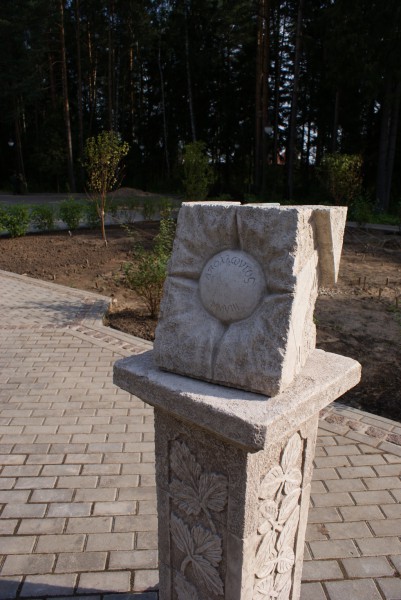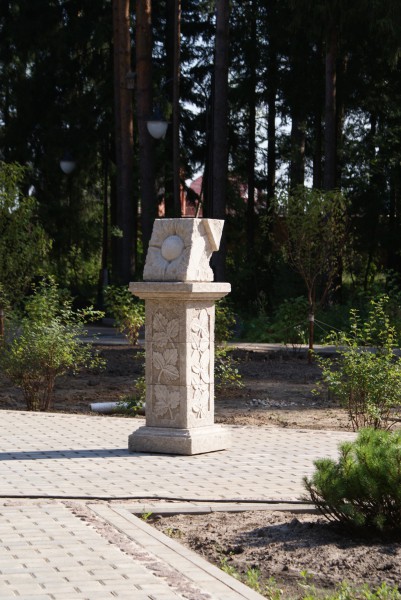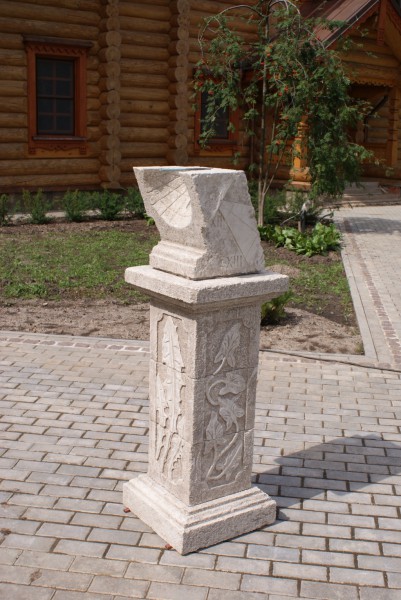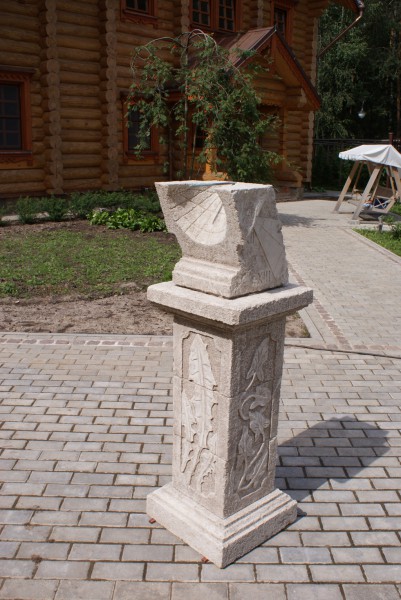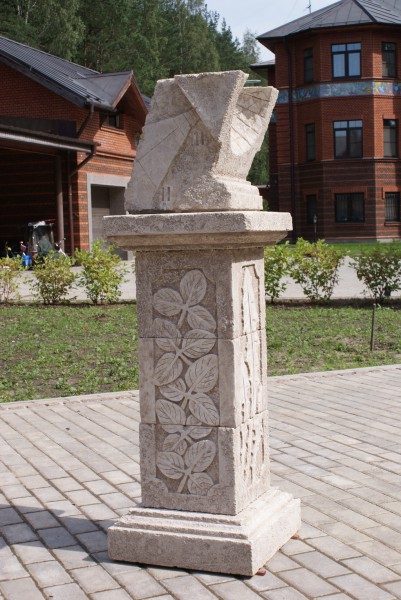Aleksandr Boldyrev sundials
Sundials and cultural artifacts
Apollonius of Perga
Specification
Single copy. Crimean limestone. Artificial aging. Gnomon is made of hammered copper. Dimensions 300 x 380 x 450 mm. Weight without pedestal 28 kg. The cross section of the central part of the pedestal is 300 x 300 mm. The instrument is a combination of two vertical sundials with the Greco Roman sundial.
Related information
1. Encyclopædia Britannica
2. Apollonius of Perga. 1828. pdf
Description
The instrument has three dials. Greco Roman surface is the section of a cone and the two planes — the horizontal plane and the plane inclined according to the latitude of the location. The cone axis is perpendicular to the axis of rotation of the Earth. Gnomon is a copper rod whose apex lies at the point of intersection of the axis of the cone and the line of intersection of said two planes.
The other two dials are cut out the stone on the east and west edges of the instrument. Each of them has two levels: the upper level forms a polar gnomon, the lower level serves as a screen on which the shadow is cast. Polar gnomon has a nodus in the form of a small notch. Thus, the instrument allows you to record the days of solstices and equinoxes. Lines corresponding to the declination of the sun in these days are carved on the lower level of western and eastern sides of the instrument.
On the northern side of the instrument, a four-ray star is cut out of the stone. On its surface, the name of Apollonius of Perga is written in Greek. This antique mathematician was one of the first who investigated the conic sections, and gave a definition of geometric shapes such as an ellipse, circle, parabola and hyperbola.
The carved pedestal shows the leaves of the meadow plants: clover, currants, dandelion and bindweed.
The instrument is set in Moscow region in August 2009.
